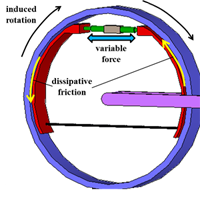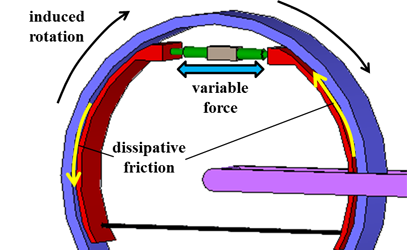
Civil, construction and environmental engineering Assistant Professor Simon Laflamme will use car brake technology to ensure the structural integrity of buildings. Thanks to a recent $200,691 National Science Foundation (NSF) grant, Laflamme will integrate electronic control systems to reduce building movements due to wind and earthquakes hazards.
His project is entitled “Developing the Next Generation of Cost-Effective High Performance Damping Systems for Seismic and Wind Hazards Mitigation.” The goal is to advance the technology of systems to reduce building damage during earthquakes, and ensure building serviceability during moderate and strong wind events.

For example, when winds blow against a building, the damping system detects building motion, triggering electrical signals to drum brakes installed in building floors to dampen movement in the building’s structure. Adding electrical signals is what transforms passive technology, like viscous dampers, into semi-active damping systems, allowing a substantially greater mitigation performance. “Much like drum brakes enable cars to decelerate, this semi-active damping system dissipates energy in movement through friction,” Laflamme says.
The semi-active damping technology would run on a building’s electrical power. And in case of a power outage, a battery would provide high, robust and reliable damping.
The grant covers research funding from June 1, 2013, through May 31, 2016. Costs covered include a doctoral candidate and undergraduate assistance to build a prototype of the damping system, characterize its dynamics capacity, and conduct viability studies.
